#AVs
QOTD: Feeling Less Than Optimistic About Hands-off Driving?
Sorry for another winter-themed post, but real life has a way of pointing out weaknesses in man’s systems. If you’re enjoying life down in Del Boca Vista, Phase III, this should provide some amusement.
Here goes: It’s a mess up north. Mother Nature’s not asking consent, and the roadways around Casa Steph are dirtier than a roadhouse brothel floor at 3 a.m. The last couple of weeks has brought snow, rain, freezing rain, more snow, and a type of precipitation that can only be described at #4 birdshot fashioned out of ice, hurled straight into your eyes via a bitter wind.
As me about my test vehicles’ driver assistance features, and how these bits of technological wizardry worked in such adverse conditions. News flash: they’re often as good as useless. You know what they say about mammaries on a bull…
California Gives Ford's Argo AI Green Light to Test AVs
Argo AI, the Pittsburgh-based firm Ford pumped $1 billion into and handed responsibility for educating its self-driving vehicles, just received a go-ahead for testing in the State of California. The company gained a testing permit from the California Department of Motor Vehicles on Tuesday, making its autonomous trials perfectly legal on public roads.
Ford’s current trajectory has its autonomous vehicles entering the commercial market by 2021. That’s two years after General Motors promised to do the same. However, recent events cast doubt over whether GM will be able to meet its self-imposed deadlines (some of which dictate future investments from its partners) and start mass production of computer-controlled cars by the end of this year. It’s not just GM that’s having trouble, either. A critical look into autonomous development shows many companies are struggling with advancing the technology to a point that would make it commercially viable.
The Blue Oval might be better positioned in the autonomous race than initially presumed.
Waymo Promises New Auto Jobs in Michigan
Alphabet’s self-driving arm, Waymo, announced plans for a Michigan expansion on Tuesday. The company is currently seeking a location in the southeast section of the state and intends to hire up to 400 employees over the next five years.
According to a corporate blog post, the new new hires will be tasked with installing autonomous driving systems on vehicles built by Fiat Chrysler Automobiles and Jaguar Land Rover ahead of those vehicles entering the firm’s growing fleet.
“We’ll be looking for engineers, operations experts, and fleet coordinators to join our team and help assemble and deploy our self-driving cars,” the blog explains. “This will be the world’s first factory [100-percent] dedicated to the mass production of [Level 4] autonomous vehicles.”
Waymo's First Commercial Self-driving Service Launches in Phoenix
We’ve arrived. It’s officially #TheFuture.
After years of talk within the auto industry, Waymo says it will become the first company to offer a commercial taxi service using autonomous vehicles when the program launches in Arizona today. Called Waymo One, the Google subsidiary plans to offer the first batch of rides to the 400 individuals who participated in the firm’s pilot program. Afterwards, the service will be expanded to more riders in a broader area.
As with the company’s early rider program, Waymo wants to keep the launch small to assess demand while continuing the company’s testing in an environment it feels comfortable with. Based on the growing assumption that autonomous vehicles can’t handle inclement weather, Arizona seems like the perfect place to keep working out the bugs.
Similarly, public complaints have indicated Waymo’s fleet of Chrysler Pacificas may not yet be perfected.
Apple Co-Founder Claims Self-driving Isn't Realistic, Sick of Lies
Apple co-founder Steve Wozniak may no longer work for the company in any official capacity, but he has stayed on as a tech advisor and sounding board. When the Woz says something it usually isn’t without merit, which is why it was interesting to learn he thinks self-driving vehicles aren’t going to happen.
Previously, Apple was said to have hundreds of employees working on an electrified, autonomous vehicle as part of Project Titan. Despite having the necessary testing permits, the company shifted toward developing software for self-driving applications in 2016. CEO Tim Cook confirmed that was the firm’s new focus in 2017 but analysts and industry insiders have continued to claim the Apple Car is still quietly in development. Maybe someone should tell that to Wozniak because he seems to think the entire idea is bogus.
What Does Ford Look Like As a Mobility Company?
These days, every automaker is in the midst of a metamorphosis, eager to emerge from their chrysalis as a “mobility company.” Even brands that don’t seem bent on completely revolutionizing their business model now use the term in reference to themselves.
Ford, which has positioned itself as a mobility company ever since Mark Fields was steering the ship, is among those pushing the narrative the strongest. Fields may have been fired for having a lofty, tech-focused vision that couldn’t charm investors, but much of it carried over to Jim Hackett’s tenure as CEO. Ford desperately wants to be seen as a cutting-edge nameplate.
However, the assumption among industry experts is that it’s lagging behind General Motors in terms of autonomous driving, electrification, and the ability to tap into alternative revenue streams. We sometimes wonder how accurate those assumptions are.
Waymo Spins Tragedy Into Triumph for Autonomous Vehicles
Last month, a motorcyclist was injured by one of Waymo’s self-driving Chrysler Pacificas. According to the accident report, a car in the left lane attempted to merge into the same middle lane as the Pacifica test platform, which was operating in autonomous mode. The safety driver then “took manual control of the Pacifica out of an abundance of caution, disengaged from self-driving mode, and began changing lanes into [the outside lane].”
Considering the AV wasn’t traveling above 25 mph, it’s a little curious the driver took evasive action, unless the second car attempted to merge directly into it. Regardless, the Pacifica’s lane change placed it into direct contact with a motorcycle that was moving slightly faster. Waymo said that, had the autonomous system been left in play, the vehicle would have assuredly avoided the accident.
Midterm Elections Add Ticking Clock Element to Congress' Self-Driving Car Bill
It looks like Congress’ new self-driving bill might have to wait until a new batch of unmentionables plant their collective rear ends in the seats populating Capitol Hill. Already passed in the House, the SELF DRIVE Act has managed to garner bipartisan support — a true miracle in these troubled times.
However, it’ll have to spread wings if it wants to be signed into law before year’s end. The midterm elections could stymie everything and force Congress to start all over again. A likely prospect, considering the Senate is still going over the bill.
“This entire process has been an incredible feat of bipartisanship,” Greg Rogers, director of government affairs at Securing America’s Future Energy, told Bloomberg. “Attempting to recreate a bill that’s this ambitious and this significant would be like trying to catch lightning in a bottle all over again.”
More Evidence That Self-driving Cars Are on a Road to Nowhere
We’ve been critical that self-driving systems are, ahem, “oversold” by automakers and tech firms hoping to boost their stock valuations. That doesn’t mean autonomous vehicles won’t happen, just that the timeline is probably a lot longer than the public has been led to believe. Still, it makes sense to pursue AVs. The first company to achieve legitimate self-driving will blow the hinges off a door leading to an array of new business opportunities.
General Motors, long considered a frontrunner in the autonomous race, is apparently in desperate need of a second wind. Its Cruise self-driving unit is said to be woefully behind in its attempt to bring an autonomous vehicle to the commercial market by 2019. Some GM staffers have confessed that the current system isn’t even capable of identifying whether objects are in motion or not — which seems like an important distinction for a computer-controlled automobile to be able to make.
Tesla Places Pointless 'Self-Driving' Option On Hiatus
Tesla Motors is abandoning the “fully self-driving” purchasing option on all of its vehicles. The option debuted in 2016 as a way to ensure your new car would be future-proofed and able to incorporate autonomous features. But those upgrades never really came — leaving customers who spent $8,000 angry enough to file a class-action lawsuit against the company for failing to deliver on its promises. At least they still got those EV tax credits and free access to the company’s fancy new Autopilot chip (which is also a bit of a mystery item).
The option appears to have been removed from Tesla’s website this week — prompting customers to ask CEO Elon Musk what was up after he announced a rejiggering of the Model 3 lineup. According to a tweet from Musk, the self-driving option was removed because it “was causing too much confusion.”
Well, whose fucking fault was that?
Feds Abandoning 10 Self-driving Test Sites, Sticking With Voluntary Regulation
With Honda and General Motors teaming up on a self-driving car and GM’s Super Cruise getting the green light from Consumer Reports, it’s already been a busy week for automotive autonomy — and it’s only getting busier.
The U.S. Transportation Department plans to repudiate 10 locations previously outlined by the previous administration to serve as federally recognized proving grounds for self-driving vehicle tech. But don’t think for a second that this means the noose is tightening around the neck of autonomous testing. The Trump administration is preparing a new initiative that will lead to nationwide testing from just about anyone who can cobble together a vehicle with advanced driving aids.
Honda Invests Big in GM's Cruise Self-driving Arm
Honda likes what GM Cruise LLC is doing, and wants it to have some cash. On Wednesday, the Japanese automaker announced it would invest $2.75 billion in the GM-owned autonomous driving company, hoping to reap some of the reward of its purpose-built self-driving car.
While still under development, Cruise claims the vehicle — free of such things as a steering wheel or pedals — will arrive in 2019. Already, the company has a fleet of modified Chevrolet Bolts operating as testbeds for the technology. Once unveiled, GM Cruise plans to use the vehicle in a new ride-hailing service while also making it available to others, potentially funneling big bucks into its parents’ coffers. Honda’s, too.
Scary Stats: Drivers Don't Know Jack About the Tech In Their Car
Over the weekend, I found myself conversing with a young woman who admitted to being slightly creeped out by modern automotive technology. She had a bone to pick with everything from push-button ignitions to adaptive cruise control. It was surprising admission from an individual who is planted squarely in the middle of the Millennial age bracket and has no serious interest in cars, but one I’ve been hearing more often lately.
The American Automobile Association seems to be rather touchy on the issue, as well. Much of its interest in the subject revolves around present-day tech lending itself to distracted driving, something it is firmly against. But the AAA Foundation for Traffic Safety appears absolutely convinced that the introduction of advanced driver assistance systems will save lives. However, it also believes that its full potential won’t be unlocked until consumers accept these technologies, understand how to use them, use them as intended, and avoid misusing or becoming over-reliant on them.
Frankly, that sounds like wishful thinking. So long as advanced driving aids exist, they’ll probably be misunderstood and misused. People don’t even use their turn signals correctly, for Christ’s sake.
The Vision INext is BMW's Crystal Ball, Slated for Production in 2021
BMW has showcased the new flagship SUV for the electric i brand. Called the Vision iNext, the vehicle’s aim is to make customers appreciate what’s on the inside — which is important when you’re moving into mobility and out of driving. BMW claims that the model represents the union of vehicular autonomy, connectivity, electrification, and services. It also represents the end of the car as we currently know it.
Don’t confuse the iNext as the death knell of motoring, though. This remains a concept car, not something that you’ll see appearing in your neighbor’s garage in the coming months. Despite promising a production model in 2021, this is still a conceptual exercise — BMW’s attempt at building a crystal ball that allows it to peer into the future. While we’re not going to argue the validity of clairvoyance or scrying, we will suggest that the utility vehicle is probably a more useful forecasting tool than a glass orb and a gut feeling.
Mercedes-Benz's Hideous New Mobility Concept Isn't All That New
On Monday, Mercedes-Benz unveiled the Vision URBANETIC (styled in all caps by the manufacturer) — an all-electric, autonomous nightmare the company claims “answers the questions of future urban mobility.”
The modular design is as versatile as it is ugly. But it’s an important example of the direction automakers are collectively heading. Despite autonomous vehicles being oversold by manufacturers for years, we’re finally reaching a point where they feel comfortable enough to monetize them. Mercedes thinks the Urbanetic will prove revolutionary in redefining our roads. Still, it’s not the newest idea, despite Daimler calling it a “groundbreaking concept.”





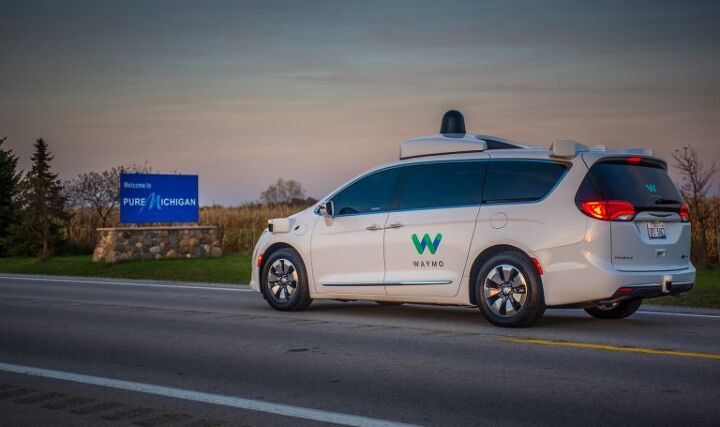

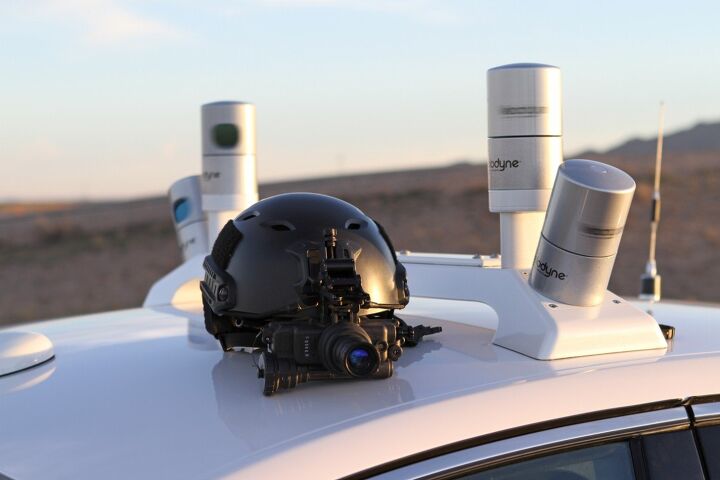




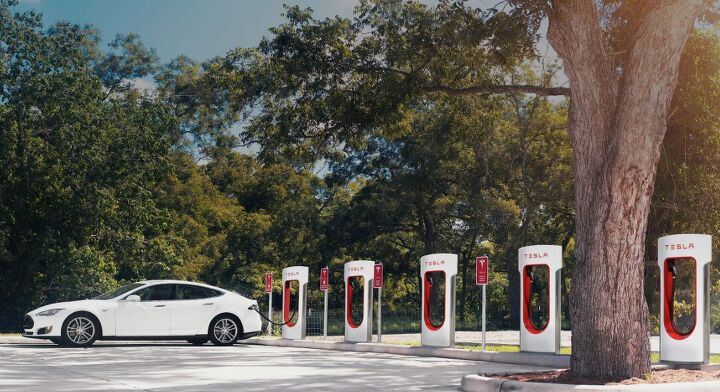

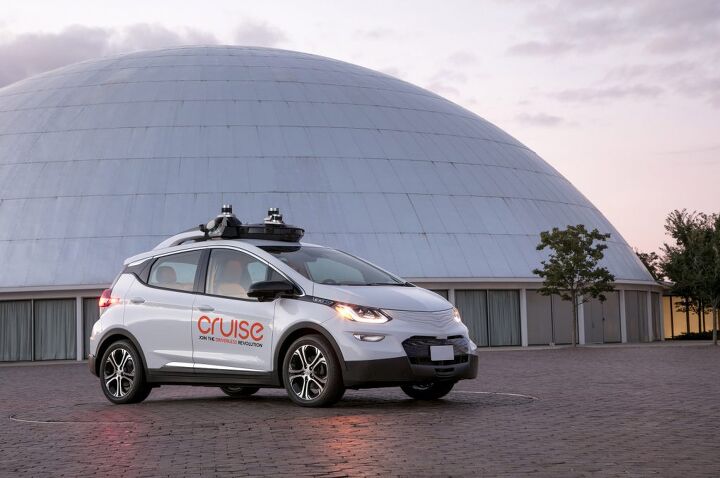
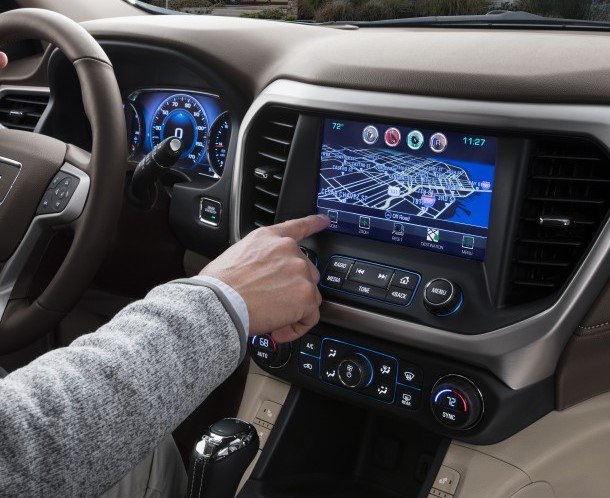
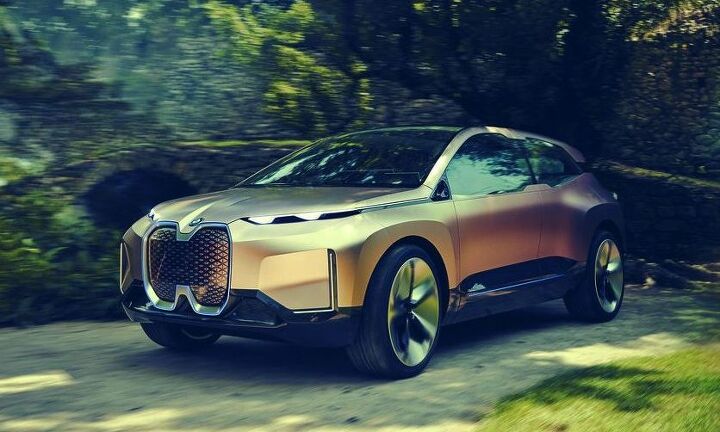
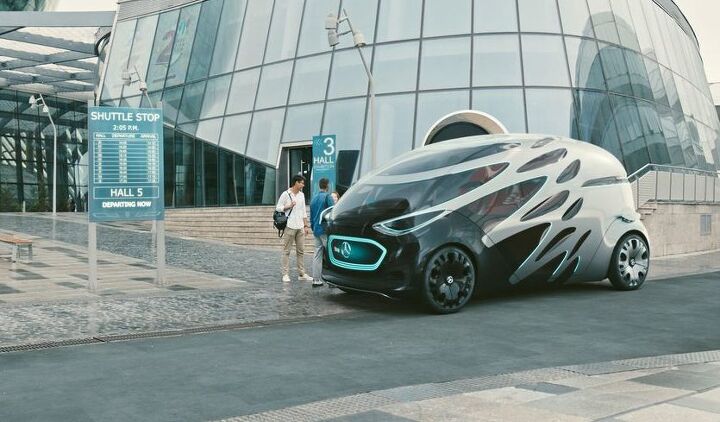












Recent Comments